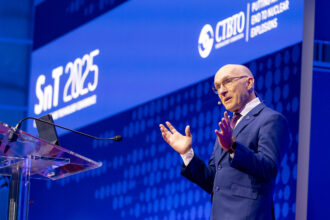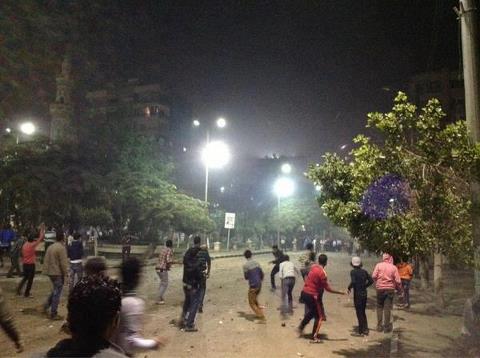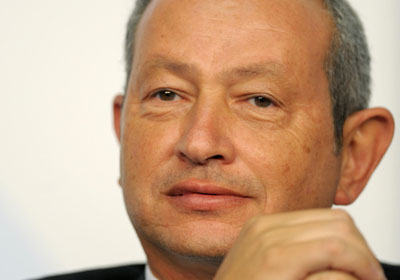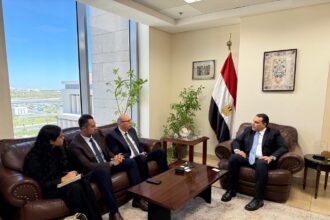
(Phot by Aaron T. Rose)
Deadly clashes broke out late on Friday near the sit-in of supporters of ousted president Mohamed Morsi in Rabaa Al-Adaweya. The Ministry of Health announced at least 21 dead and more than a 100 injured.
The Muslim Brotherhood meanwhile claimed casualties of 100 dead and more than 3,000 injured, and field hospitals in Rabaa Al-Adewaya claimed up to 120 deaths. Doctors there have reported patients suffering gunshot wounds to the head, neck and chest, which protesters have blamed on “sniper fire from nearby buildings.”
“The situation became extremely intense by 2am and we began receiving more and more that were shot with live ammunition from then on,” said a field hospital doctor, Ahmed Gamal. “They were shooting to kill; this was no arbitrary killing.” Ambulances have been transporting the bodies to nearby hospitals, including Sayed Galal, Bab Al-Sharqeya and Qasr Al-Eini.
Among eyewitnesses at Rabaa Al-Adaweya, there are conflicting reports as to how clashes began, but all claim that the police first fired tear gas and birdshot before using live ammunition.
Mohamed Al-Arabi, a protester who was injured during the attack, said clashes began when a march from the Autostrad became trapped in the Al-Manasa area, near the 6 October Bridge exit to Nasr City, after they were unable to enter the Rabaa sit-in because it was too crowded.
“It was around midnight when the police started firing tear gas at us and snipers on the rooftop of Al-Azhar University began shooting shortly afterwards,” he said.
Mohamed Abdelfatah, who suffered a gunshot wound on his hand, said protesters hid behind cars and threw stones at the police once they started to fire tear gas.
Emad Ibrahim, who took part in the march at Al-Manasa, said protesters retreated to there at around 11pm Friday night after police had prevented them from proceeding onto the 6 October Bridge. He claims that as protesters remained in the area, police attacked them with tear gas and live ammunition.
Ahmed Mohamed Rabie, another protester, said that they formed a human shield to stop several who were participating in the march from approaching the police officers on the October 6 Bridge. He added that the attack came after some protesters began chanting, “The police are thugs!”
Ministry of Interior Spokesman Major General Hany Abdel Latif released a statement on Friday’s events where he said that 21 died, blaming the Brotherhood for the violence.
“A march from Rabaa Al-Adaweya headed to 6 October Bridge to block it,” Abdel Latif said. “They set tyres on fire at the entrance ramp of the bridge.”
The march then clashed with residents of Manshiyet Nasr, he said, adding: “birdshot and live rounds were used in the clashes, leading to the death of 21 and injuring many others.”
Abdel Latif said that security intervened to stop the clashes and to prevent the blocking of the bridge using only tear gas, adding that security officials had dispersed protesters and restored traffic flow.
During the clashes, 14 officers and 37 security personnel were injured, Abdel Latif said, two of whom having been shot in the head and currently in a critical condition. The ministry warned protesters against using any form of violence.
The National Coalition for Supporting Legitimacy (NCSL) meanwhile released a statement on Saturday blaming the security forces for Friday’s clashes.
“When Rabaa square couldn’t hold the increasing numbers of protesters, they had to spread out on Nasr road until they reached Al-Azhar University,” the statement read.
They added that security forces supported by the army had showered protesters with tear gas, and then deployed snipers using birdshot and live rounds.
“Snipers climbed over Al-Azhar University buildings and conducted a brutal sniper attack on protesters, which lasted from 2.30am on Saturday until now and led to massive numbers of martyrs and injured,” the NCSL statement read.
They added that the field hospital was unable to house the large number of injured.
The NCSL also accused “the coup leaders” of conducting an “exclusionary policy” against peaceful protesters in Rabaa and Al-Nahda square, “especially after the leader of the coup asked for an open mandate to kill peaceful protesters and after the Minister of Interior announced his intention to disperse the sit-in using what he called ‘peaceful means’.”
In a press conference, Minister of Interior Mohamed Ibrahim said that security forces were standing at the entrance of 6 October Bridge. He claimed that although the entrance was far from Rabaa, protesters went there to “create a political crisis and then claim police violence.”
Prosecutor General Hisham Barakat ordered an investigation into the clashes on Saturday, reported state-owned Al-Ahram, demanding an initial report on the incident.
Protesters in Rabaa al-Adaweya have been overcome with anger and predict that the violence will continue as the Ministry of Interior attempts to disperse the sit-in. A sheikh led the prayer in the hospital in the afternoon, with doctors and the families of casualties breaking down in tears and chanting against Al-Sisi.
“This is the beginning of a period of bloodshed,” said protester Ahmed al-Ashrawy. “What is happening in Syria provides only a glimpse of what will happen in Egypt.”




